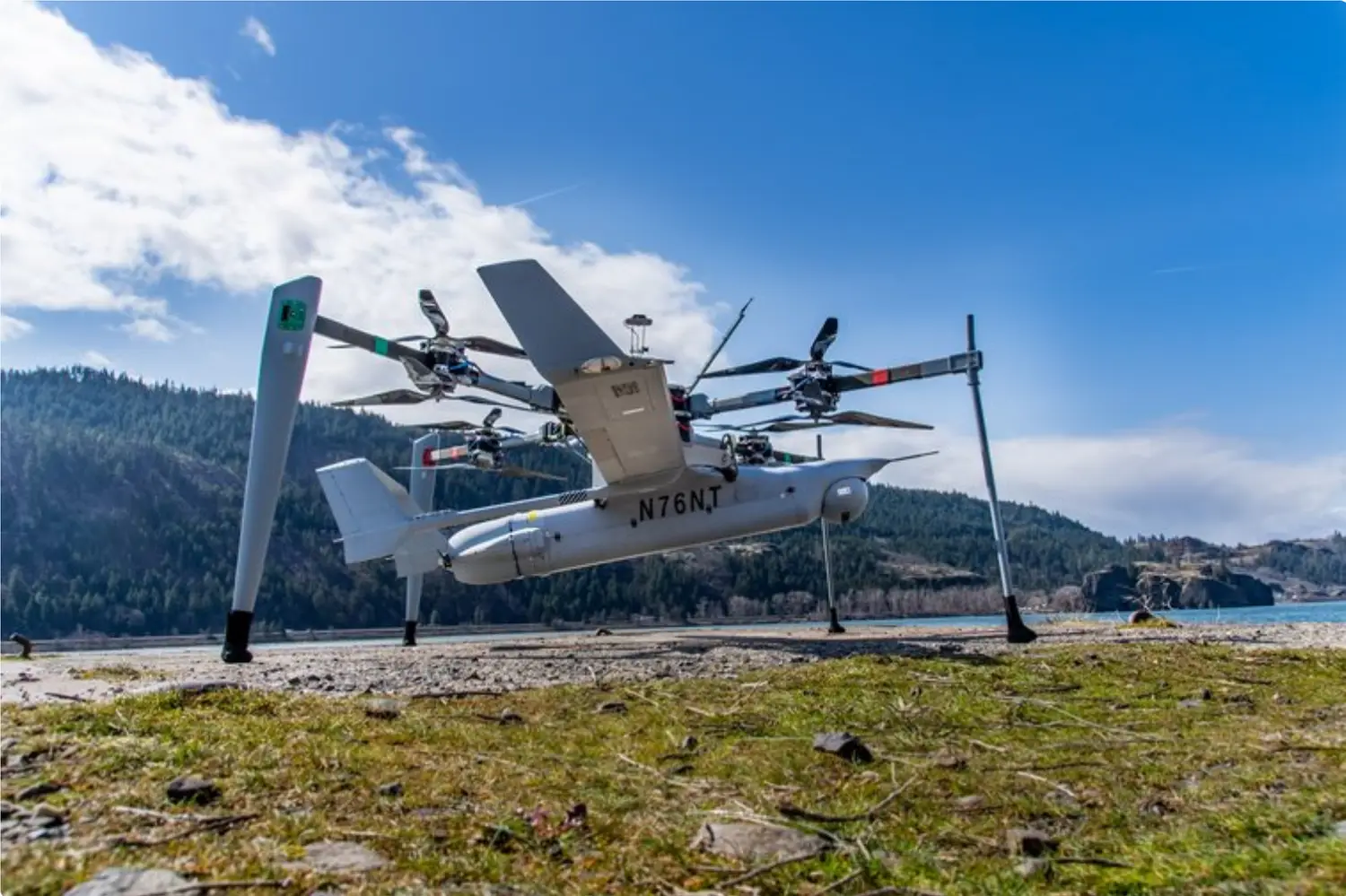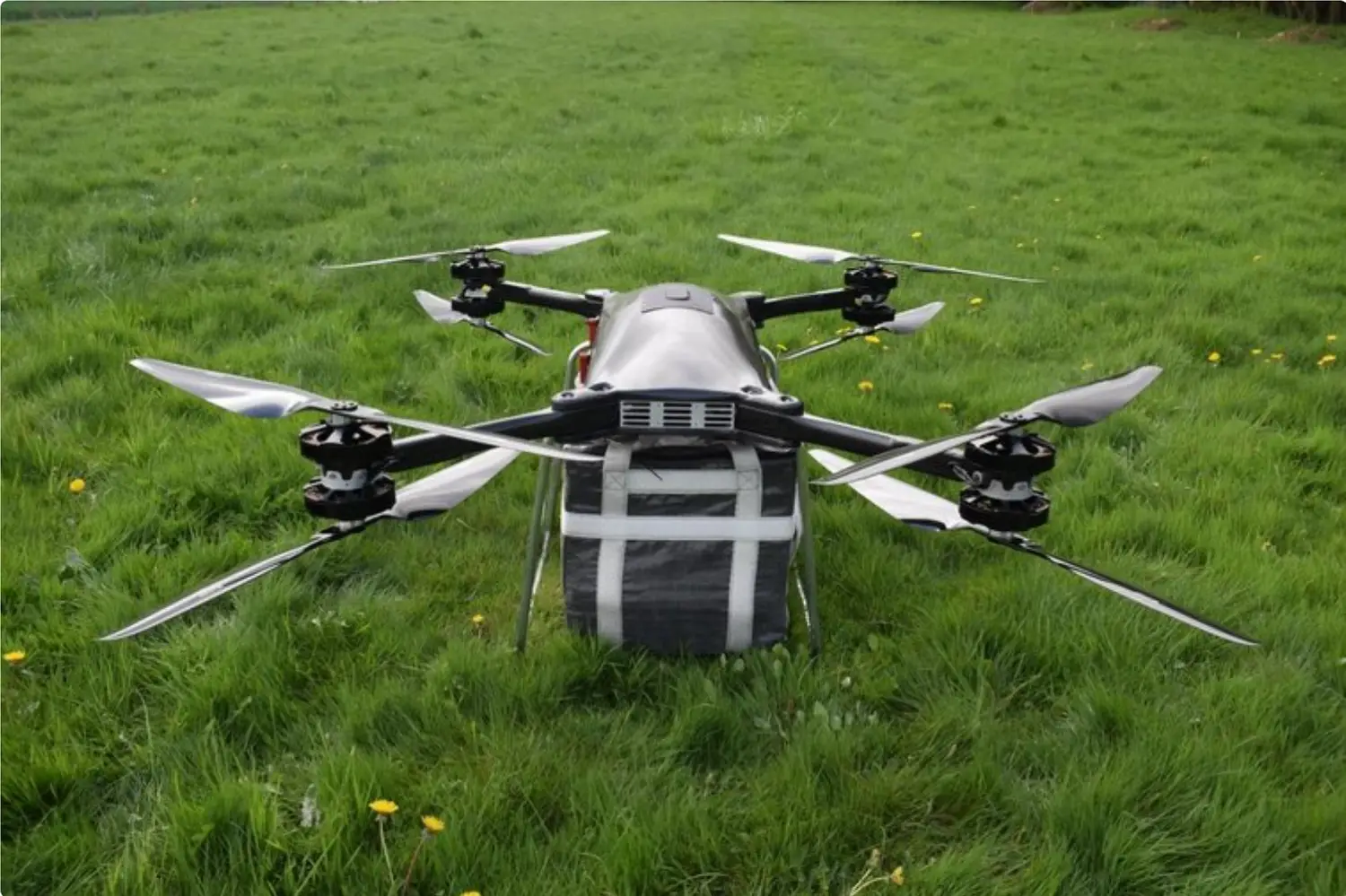
REPORT HOME > News
April 2023 | technology report | Rotary-wing UAS
by Norbert Neumann
Insitu's vertical take-off and landing (VTOL) Integrator UAS uses a detachable quadcopter element that allows it to be launched from anywhere while retaining heavier payload carrying capabilities.
Above: The Integrator can carry around 18kg of payload with a 16- hour endurance. (Photo: Insitu)
Insitu recently launched its vertical take-off and landing (VTOL) Integrator UAS product.
The system has two parts: the Flying Launch And REcovery System (FLARES) developed by Hood Tech and the Insitu Integrator aircraft.
FLARES, the detachable octocopter element, allows the fixed-wing UAV to vertically take off from ships or land, eliminating the need for a launchpad.
Related Articles
BAE and Innovaero debut Strix, Australia’s first domestic armed VTOL UAS
Aeronautics to upgrade Finland's small UAS fleet as country cements NATO entry
The platform can shed FLARES after reaching the desired altitude and operate as a regular fixed-wing aircraft, allowing the drone to carry heavier payloads at long ranges.
The launch equipment is recovered shortly after separation using an unmodified system.
Once the UAS is ready to land, FLARES is sent up into the air, connects back on the drone and lands it safely.
‘Because we can separate VTOL from the aircraft, it allows us to do things with VTOL component sizing that allows for a more reliable, robust, safe system,’ Justin Pearce, VP of engineering at Insitu, told Shephard.
‘We don't have to worry about sizing batteries, so there's just enough power but not too much that the batteries are heavy in motors. The rotors, the batteries, these all provide a lot of weight to the aircraft, so we can amply size those components.’
The Integrator can carry around 18kg of payload with a 16-hour endurance.
Insitu says the platform marks a significant improvement over 'tail-sitter' designs in its ability to fly on and off ships in rough seas where deck roll and motion present significant issues for tall and narrow UAS.
The company has tested the UAS, launching it from the USS Paul Hamilton.
Pearce said Insitu has a number of military customers but could not divulge any details.
Insitu’s Integrator UAS recently set a company record for the longest flight with a 25.5-hour sortie on an operational mission.
The record flight was achieved while the Integrator was equipped for a multi-payload mission.
Next article below > US buys 21 tactical resupply drones for navy and marines
April 2023 | technology report | rotary-wing UAS
by THE SHEPHARD NEWS TEAM
Survice Engineering has been awarded $8 million contract for 21 TRV-150C Tactical Resupply Uncrewed Systems.
Above: The TRV-150 is a VTOL-capable cargo-carrying UAS manufactured by Malloy Aeronautics and sold by Survice Engineering in the US. (Photo: Survice Engineering)
The US DoD has awarded Survice Engineering an $8 million contract for the production and delivery of 21 TRV-150C Tactical Resupply Uncrewed System (TRUAS) and 12 months of system engineering programme management services.
The efforts will support the USN and US Marine Corps Small TUAS Program Office.
The works will be performed in Churchville, Maryland, and are expected to be completed in March 2024.
The TRV-150 is a VTOL-capable cargo-carrying UAS manufactured by Malloy Aeronautics and sold by Survice Engineering in the US.
According to Shephard Defence Insight, TRUAS, sometimes called Small ULS-A, is a USMC programme for a UAS capable of transporting at least 60lb (27.2kg) of cargo through a 10km radius in various configurations.
Out of six vendors that entered a challenge in January 2020, Malloy Aeronautics' T-150 and Chartis Federal's MK4-RX were tested in a Field User Capability Assessment (FUCA) in March 2021.
According to the USMC's FY2024 Budget Estimate documents, another 172 units will be acquired until FY2028, giving the TRUAS programme an estimated value of $65.15 million.
Examples of the platform were committed to Ukraine as military aid in May 2022.

